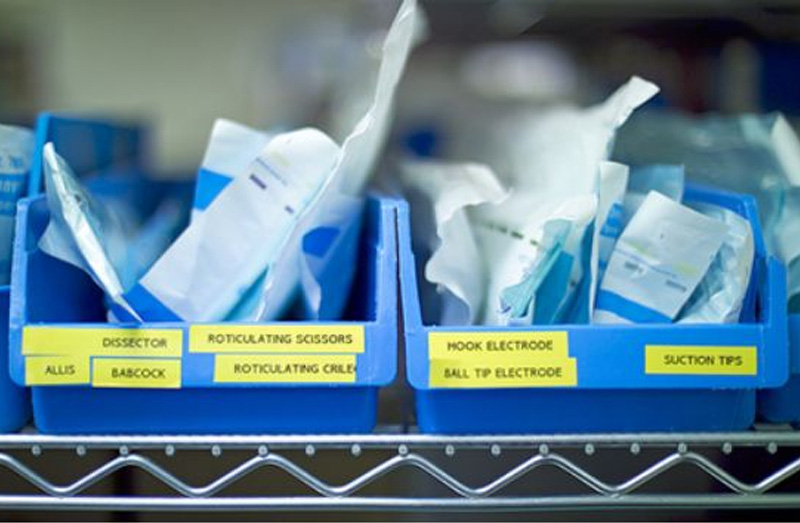The Barries To RFID Technology In Healthcare.
Previous last news what we explore the benefits implementing
RFID technology in the healthcare, which RFID has the potential to save organizations time and money by providing real-time traceability, identification, communication, temperature, and location data for people and resources. The purpose of this news is to explore the barriers in the healthcare.

The Barries To RFID Technology In Healthcare.
Although RFID technology is very promising for the healthcare industry, there are several risks or barriers that impede the implementation of this technology which includes economic, technical, organizational, and legal challenges. Before successful implementation of an RFID technology system can take place, the risks and barriers of the particular organization must be evaluated to ensure the correct and most appropriate selection of technology.
One of the biggest challenges reported regarding RFID technology is the cost of the system and the system’s return on investment (ROI). Because the cost of an RFID tag can range from four cents per tag to upwards of $50.00 per tag depending on the capabilities and chip. Tags can be reusable or disposable and have associated costs. Reusable tags are higher in price and require a standardized cleaning technique before the tag can safely reenter circulation. The size of most RFID tags are small and light in weight so as not to be cumbersome on equipment or a patient, however, it is easy for these tags to then be carried away from the hospital, causing a loss in tag inventory and therefore an unexpected cost for the organization. The RFID tag readers can range from $1,000.00 to $3,000.00 per reader. A fully functioning RFID system requires tags, readers, infrastructure, middleware, printers, and so on, and can cost an organization millions of dollars.
Technical limitations such as system errors, RFID tag readability, interference with medical equipment, and interoperability with other health information technology also impede adoption. Health information technology evolution has presented interoperability challenges for many institutions. RFID hardware and software has not yet been standardized and therefore presents potential for interoperability concerns across providers. System errors can occur for a number of reasons. RFID readers can provide false reads caused by interference in the electromagnetic field by other medical equipment, metallic objects, liquid, glass, and moist environments. Read rates and read accuracy is also affected by the previously mentioned objects and environments. Loss of accuracy and reporting of the systems take place in situations where tags are lost or damaged therefore making them unreadable. Without properly working equipment, the system cannot function to its full capacity. Work is being done to improve this technology, however where the reader is placed on the equipment or patient being tracked is vital to the transmission of information. This is an example of human error that must be corrected to prevent these technical barriers.
In another hand, RFID technology was used to authenticate patients and medical staff during interventions such as medication administration and blood sampling. The results of the tests found some technical issues with the RFID technology including wireless network connectivity, lack of staff knowledge of detection areas when administering medications, and the inability of the radio frequency waves to reach some of the tags on the nurses and medication cart due to ceiling height evaluated RFID technology to track staff and equipment location in an acute care hospital setting. The asset tracking capability of the system used to help users find tagged equipment, demonstrated modest accuracy in locating the asset.
Commonly, the asset was found in a distant location from where it was depicted in the system. Time studies showed that the system did not accurately report locations and therefore limited utility was identified. also identified the need to frequently calibrate the locating system equipment which is difficult when implemented on a large scale due to time and cost.
Healthcare provider perceptions of the utility of a system can present barriers for implementation if there is no buy-in or acceptance.Conducted an evaluation of a commercially available RFID system which was deployed in an acute hospital setting. Staff surveys and interviews were conducted concerning the accuracy and effectiveness of the system. As previously mentioned, the system provided modest accuracy and therefore the staff’s evaluation of the value was mixed. Specifically, nurses were dissatisfied with the accuracy of the technology in locating equipment and patients and its inability to decrease their search time for equipment. Although training on the system was provided as well as a one-week period of familiarization, survey results revealed dissatisfaction with the end user interface (UI) as well. Suggestions for improvement included visual simplification of the system, clarification with icons, keys, and maps, as well as “cheat sheets” on how to use the system.
In addition to organizational acceptance challenges and concerns, privacy and security concerns arise when considering RFID implementation and identified concerns for inappropriate collection, intentional misuse, or unauthorized disclosure of healthcare information due to inadvertent transmission or deliberate interception of the tag information. These concerns for privacy and security are raised due to the surveillance potential of the technology and the sensitive information it contains which could be intercepted by unauthorized readers.